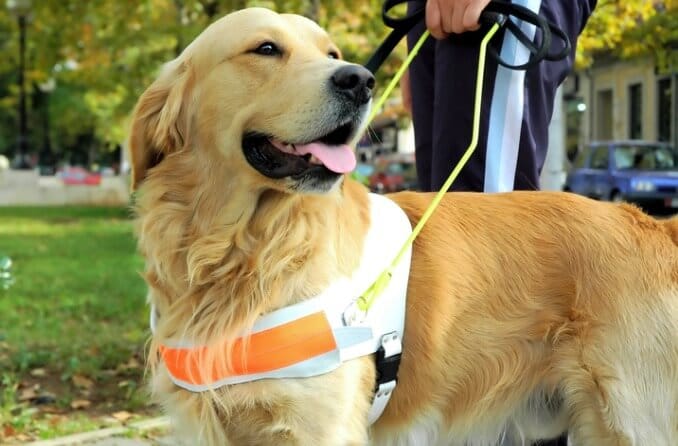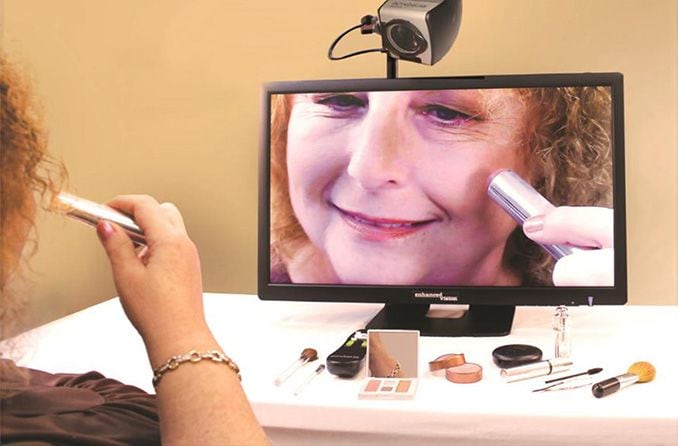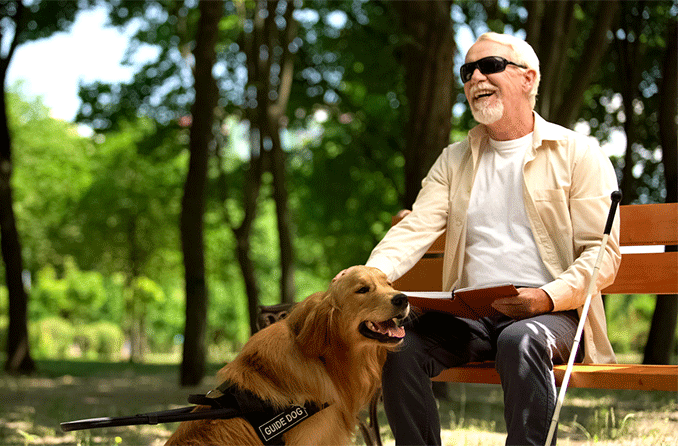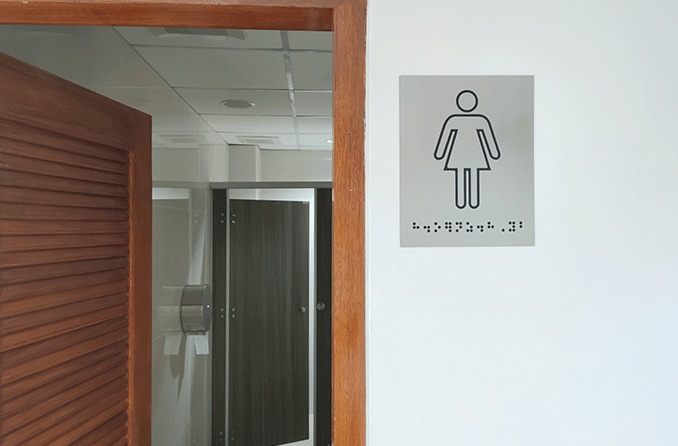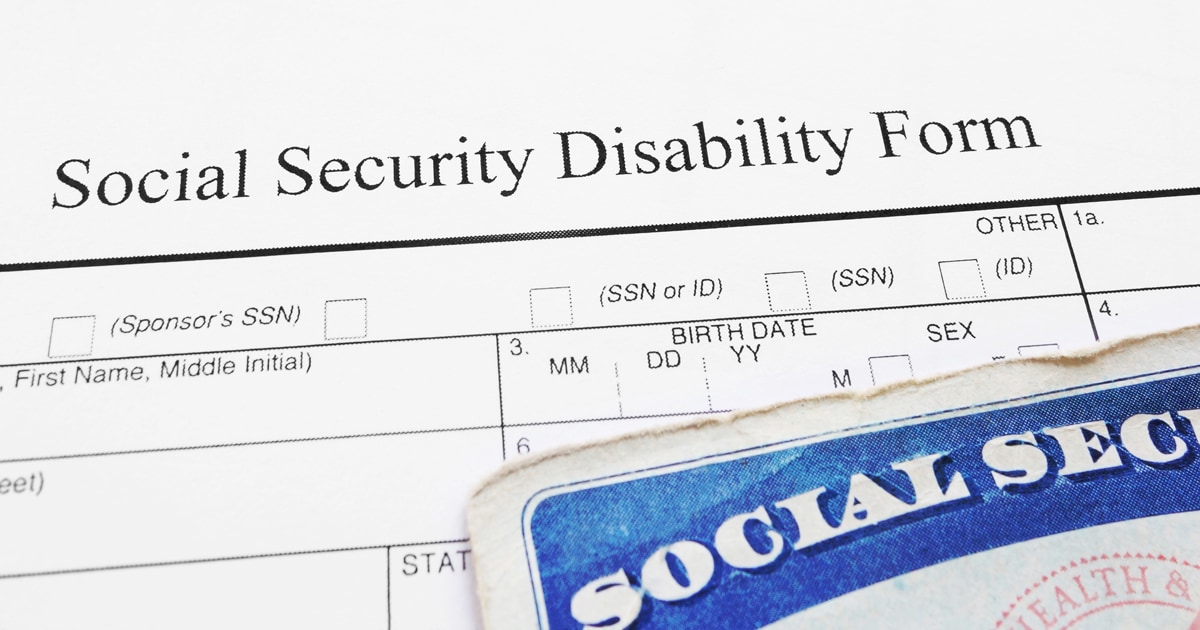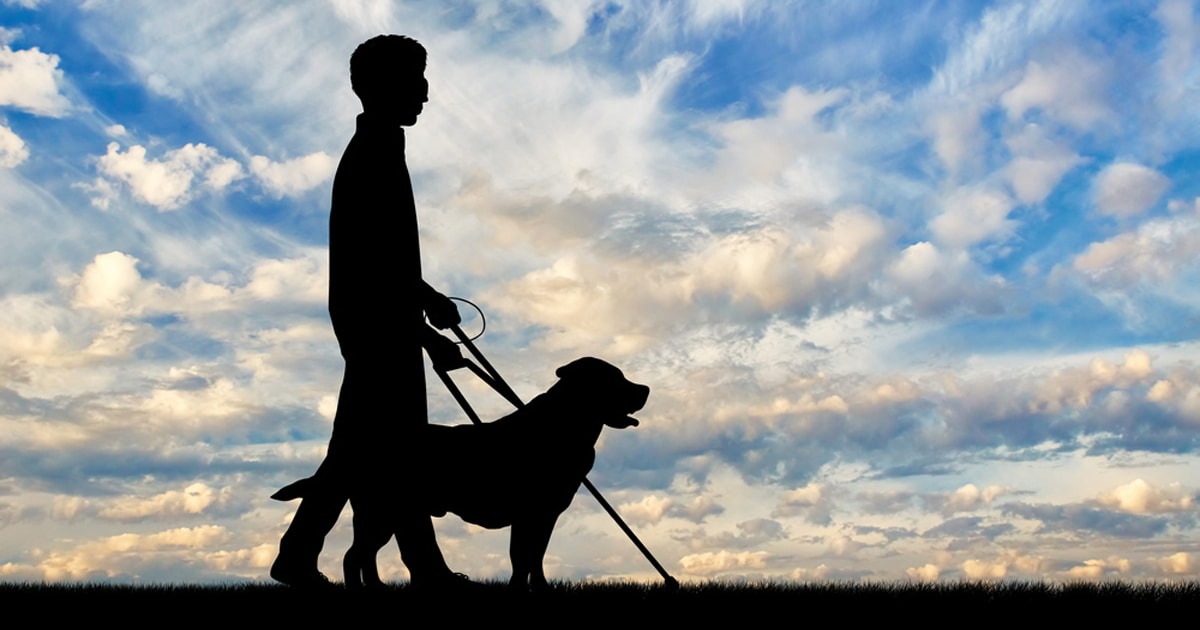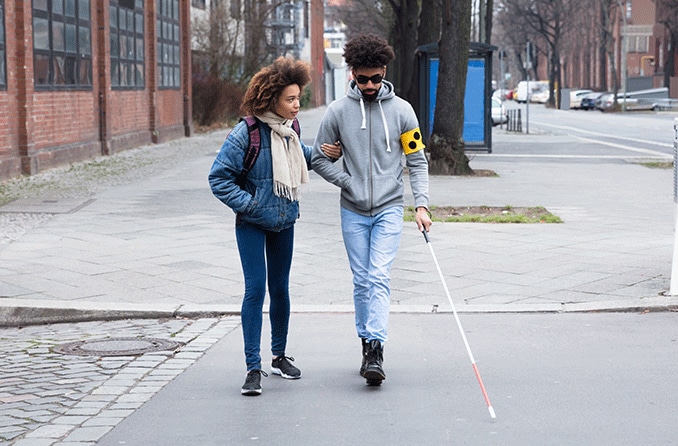Guide dogs for people with visual impairment and other limitations
Being visually impaired can be a challenge, but that doesn’t mean visual impairment leads to helplessness. There are a number of programs, tools and support systems in place for those who have vision limitations. And these exist to help make life more manageable.
Among the many tools available for the visually impaired are guide dogs. Guide dogs are animals that have been specially trained to provide comfort, companionship and physical leadership to those with limited sight.
An article published in The Saturday Evening Post launched the popularity of guide dogs among blind World War I vets. The program has continued ever since.
Guide dog programs have been helping people with visual impairment for nearly a century — they first became popular in 1927.
If you or someone you know is visually impaired and would like more information on working with a guide dog, this guide should help you find the appropriate resources.
Criteria for getting a guide dog
First things first, in order to get a guide dog, you have to meet several criteria. This involves physical qualifications as well as special training.
Some standard requirements outlined by most guide dog agencies include:
You must be legally blind (even while wearing vision correction, like glasses or contacts, visual acuity is 20/200 or less).
You need to be 18 or older, but some programs will let you apply for a guide dog at 17.
You must be able to travel independently with a cane. Guide dogs act as replacements for canes, so you have to be able to navigate with either.
You must be able to walk for a minimum of 30 minutes without stopping.
You must be financially able to take care of your dog.
You must complete orientation and mobility (O&M)training or have owned a guide dog in the past.
These factors can vary by organization, so be sure to read through the information and ask questions once you find a program you like.
What is orientation and mobility training?
Orientation and mobility (O&M)training is a program that teaches those who are visually impaired the skills needed to independently navigate the world using a white cane as a tool. It’s important to have O&M training and skills under your belt because a guide dog eventually replaces the cane.
The O&M training course is available for free through many organizations, and it only takes one week to complete. It’s offered for all levels of training and is suitable for the following:
Beginner-level training for those who have never used a cane.
Readiness training for those who are applying for a guide dog and need to master specific guide dog related skills. Some retake the course when preparing for a new guide dog even if they’ve been trained and worked with a dog before.
“Refresher” training for those who need to brush up on their skills or learn new ones.
Advanced training for those who live in or are traveling to areas with complex paths or intersections.
Many people choose to repeat O&M training before traveling to a new place. It is also beneficial for those who’ve recently moved to a new location and are unfamiliar with their daily surroundings. People also commonly take it again if their vision has declined since the last training.
Steps you must complete to receive a guide dog
Once the criteria for getting a guide dog are understood, the process of getting a guide dog can begin. Generally, the following steps are taken:
Review guide dog programs and settle on the one that best meets your needs and preferences.
Familiarize yourself with the organization’s standards, requirements, values and type of dog you’d be working with.
Complete orientation and mobility training, and get your instructor to confirm this in writing.
Request and fill out an application from your chosen organization. And pay attention to any additional requirements. Then submit for approval. (Additional requirements are listed in the next section.)
Participate in an interview with the organization, after you’ve been accepted. Here, they’ll get to know all about you and your lifestyle in order to match you with the perfect dog.
Attend special training and complete additional education provided by the organization. This may occur on their campus as a type of “boot camp” with classes and involve scheduled training sessions plus other activities with guide dogs. Training programs vary among organizations.
Get matched with your new guide dog. The right fit requires bonding between the handler and dog, which you’ll be able to accomplish in your program.
The guide dog application process
In order to obtain a guide dog, you must submit an application, along with some other important information, to the organization of your choice. After you have selected the program you wish to apply for, you’ll need to include the following with your submission :
The application to the program , which is usually provided or available upon request on the company website.
A vision report filled out by your ophthalmologist or optometrist.
A medical report completed by your primary care physician – some places may require reports from medical specialists that you see as well.
A report completed by your orientation and mobility (O&M)instructor to ensure you have received proper training and education.*
Professional references from employers, colleagues or friends.
Some organizations may also request a short video of your home life that demonstrates your ability to navigate your surroundings. Others may require proof of a two-mile route that you can navigate on your own.
If you’ve already had O&M training, you'll just need proof and a reference from your instructor. If you’ve owned a guide dog in the past, this part of the application may be waived.
Once you submit your application, a background check will be conducted. If you are selected, you’ll then move on to the interview stage during which representatives get to know you and what you need and want from a guide dog.
On-campus education and training for handlers
After your application is approved and your interview is complete, you will be invited to the campus of the organization you selected. There, you will complete a guide dog training course and learn how to interact and work with guide dogs.
Many training programs are free and offer accommodations, including single occupancy rooms equipped with private bathrooms and desks as well as closets, internet access and televisions. This is so students are able to stay comfortable during their guide dog handler “boot camp.” For most guide dog schools, handler training lasts a few weeks.
If you aren’t local to the guide dog school you’ve selected, you may need to pay for your own travel. Talk to a representative to be sure.
Some organizations offer their training within an applicant’s own community, at a school or workplace under certain conditions. Be sure to ask a representative if you are unable to travel or stay at the school while training takes place. Note that the funding for at-home training may not be covered by the guide dog school.
The guide dog matching process
Even though guide dogs are trained thoroughly, this doesn’t mean that anyone can pick up a harness and begin making commands to any dog. Before a guide dog is officially adopted, the handler must form an emotional bond with them.
Finding the right match is important for both the dog and the handler so that both feel safe and have a deep level of trust with each other. For this reason, it’s important for applicants to speak up about their lifestyle, personality, hobbies and more.
By the end of the education and training program, the organization will officially assign a guide dog to their forever home. The decision is based on personality traits, skills, lifestyle fit and overall bonding between the dog and handler. (The handler will have worked thoroughly with the dog in question before adoption.)
How long does it take to get a guide dog?
In short, it can take up to a year in total, including the application and training stages. But it varies depending on your preferences and the demand for dogs at each agency.
First, you need to gather paperwork, references, reports and prerequisite training to put together your application. This time varies for everyone based on each individual’s pace. The training requirements on an application (O&M training)take about a week to complete.
Then your application has to be approved. This can take up to one year, but can happen in as little as two to six months. Wait times are subject to the demand for classes and dogs at each agency.
If your application is not approved, your paperwork remains valid for up to a year and a half after submission. If this happens, you’ll need updated reports from your doctors. (Again, these time periods may vary depending on the organization.)
Timing can also depend on the specific availability of each guide dog. If you have a preference in breed, coat color or gender of the dog, you may have to wait longer.
Once you are accepted into a program, you’ll have to complete additional training with a guide dog. Each program has a different schedule for classes, but once you’re in, the training lasts about three weeks.
Which breeds are used for guide dogs?
To be a successful guide dog, the animal must be intelligent, focused and attentive, and have an even temperament. After all, guide dogs do a lot of important work — so professionalism is very important for them. There are a handful of breeds that are born with these skills and/or can learn them quickly and efficiently.
Some of the most popular breeds trained as guide dogs include:
Labrador retrievers
Golden retrievers
Standard poodles
German shepherds
Crosses of these breeds are also used in many cases.
Standard poodles are considered a low-allergen breed and are often matched with applicants who have allergies to pet dander or immediate family members who have the allergy.
Several other breeds are considered a good choice for guide dog responsibilities. These include:
Bernese mountain dogs
Labernese
Boxers
Border collies
Australian shepherds
Airedales
Dobermans
In addition to their capabilities, the height of the dog also plays an important role in guiding. The dog’s height at the shoulder, added to the length of his harness should provide an easy and comfortable fit for the handler (hence the size of the above breeds).
Can you train your own dog to become a guide dog? Unfortunately, it’s not likely. Dogs that are selected to be raised to provide service are bred and trained as early as possible through special programs.
What kind of training do guide dogs receive?
Guide dogs go through several months to years of training before they are equipped with the skillset and maturity to assist a visually (or otherwise)impaired person. Training techniques can be different among each guide dog organization, but the same skills are learned everywhere.
Let’s take Leader Dogs for the Blind, for example. Their training process is split up into several stages.
First, volunteer puppy raisers take care of future guide dogs until they are 12-15 months old. During this time, the pups are trained in basic obedience and good behavior.
After that, they are returned to the agency for extensive training with instructors. This training has four phases:
Foundations – includes leash and harness training, perfecting obedience and curb training (dogs learn to stop at curbs before crossing a road). Instruction takes place in the classroom and then on a quiet street.
Basic – includes guide skills such as avoiding obstacles, traveling in a straight line, stopping for traffic and learning to make turns. Dogs also learn to locate an empty chair in a room.
Intermediate – skills are tested in both rural and urban settings to experience different sidewalk and traffic patterns. Dogs are also trained to recognize overhead obstacles and learn intelligent disobedience (this is when a dog disobeys a handler’s instruction if there is an obstacle in the way).
Advanced – skills are tested once again at a more difficult level, with lots of distractions, busy traffic and obstacles. When dogs pass this final test, they are taken back to the classroom and evaluated to find a match with an incoming handler. A health exam is given at both intermediate and advanced stages as well.
After training is complete, the dogs are ready to begin class. Here, they will train with prospective owners and get matched with their handler. After three weeks of bonding and training, the dog and handler leave together to officially begin their partnership.
Guide dog skillsets
Guide dogs are working animals. In order to perform their duties correctly, they need to have social, physical and professional skills. These include:
Basic and in-depth obedience training.
“Intelligent disobedience,” which means that the guide dog will disobey an owner’s commands if they are dangerous. If the handler gives the command to cross a street but there is traffic approaching, the dog will refuse to cross.
Ability to lead their owner safely around dangerous obstacles such as tree limbs, stairs, curbs, potholes and other hazards.
Ability to lead their owner out of harm’s way in more serious circumstances.
Willpower to ignore distractions such as toys and strangers eager to pet them.
Restaurant and public etiquette.
(Among many other skills.)
Although guide dogs are quite intelligent, the owner has to have an idea where they are going. A guide dog can help guide his handler and can even find street crossing buttons. But the dog does not have the capacity to read street signs.
Where you can get a guide dog
There are numerous guide dog programs across the United States. Many provide services to people in all 50 states, so you don’t have to be local to the organization in order to benefit from its services.
Guide dog programs by state
Notable guide dog organizations by state include:
California
Connecticut
Florida
Hawaii
Michigan
New Jersey
New York
North Carolina
Ohio
Oregon
Texas
Wisconsin
Additionally, the National Association of Guide Dog Users (NAGDU) is associated with the National Federation of the Blind. It serves communities across the nation seeking more information about guide dogs.
How much do guide dogs cost?
There are several costs associated with guide dogs, including training for both the dog and handler, the dog itself and pet maintenance. Here are some of the costs that you can expect to see.
How much does it cost to adopt a guide dog?
Some guide dogs come from non-profit organizations at no cost to the applicant . For example, Tender Loving Canines Assistance Dogs (TLCAD)are able to provide service dogs to people in need for free through the funding of donations, volunteer work and other support. The same goes for organizations such as Guiding Eyes for the Blind, Southeastern Guide Dogs and many others.
Other organizations, such as The Seeing Eye do require a fee from their members. The Seeing Eye in particular asks $150 for a student’s first visit to the facility and $50 for each additional visit. Veterans only pay $1 for services.
How much does it cost to train a guide dog?
Some organizations report that training itself can cost up to $50,000 per dog on an annual basis. For others, it can range between $20,000 and $30,000. But don’t worry, the applicant is not responsible for this cost.
How much does handler training cost?
As a prospective guide dog handler, you’ll need training, too. Many training schools offer it for free after you’re accepted to the program, but some may not cover it in full. Talk to a representative to learn more.
If you’re not local to the training school, you will likely have to pay for your own travel to get there. Keep in mind that there are schools spread across the country, so choosing one that is closer than another can potentially lower traveling costs.
If you are selected to train within your own community (at a local school, neighborhood or workspace), there may be extra costs for an external facility. Since this is on a case-by-case basis, it’s best to discuss financing options with the organization.
How much is the care for a guide dog?
There are also costs that come with training the dog and keeping it healthy. If you’re approved for a guide dog, you’ll likely need to support its care and wellness on your own after the adoption.
This includes things such as:
Annual check-ups with a veterinarian
Vaccinations and any medications needed
High-quality dog food
Treats
Toys
Bed(s)
A crate
Grooming
Some dogs may require more maintenance than others. Certain organizations offer reimbursement for the dog’s healthcare, but many owners should expect to spend up to $200 a month on maintenance.
Be sure to reach out to the organization if you have questions about cost. If you cannot afford to participate in the program’s training, any fees associated with adoption or the maintenance of your guide dog, you qualify for financial assistance.
SEE RELATED: How to create a home that accommodates visual impairment and blindness
Are there guide dogs for kids?
Most guide dog organizations are catered to adults, but some do offer youth programs for children with visual impairments.
This can mean either adopting a dog to a child’s family or inviting the youth in for a special program or summer camp. Either way, it’s a great way to get connected with the community if your child plans on owning a guide dog in the future.
Mira Foundation USA
The Mira Foundation offers guide dogs exclusively for children ages 11-16 who have visual impairments, physical disabilities or Autism spectrum disorder.
Services, dogs and training are all provided by the organization at no cost. Since they were founded in 2009, Mira USA has provided more than 3,500 dogs to those in need.
Guide Dogs for the Blind
Guide Dogs for the Blind offers the “ K9 Buddy Program,” which allows children with visual impairments to bond with a dog specially selected by the organization. There are some restrictions though. K9 buddies are not considered registered guide dogs, so they are not allowed in public places.
To apply for the K9 Buddy Program, you also need to live in one of the following states, where services are available: Arizona, California, Colorado, Idaho, Nevada, Oregon, Utah, Washington or Texas.
K9 buddies are offered free of charge to children who need them. They are considered to be pets, not guide dogs.
Leader Dogs for the Blind
While the organization Leader Dogs for the Blind does not offer guide dogs for people under 18, it does offer summer camps and other events where young people can “test drive” what it’s like to have a guide dog.
The Summer Experience Camp is a free, week-long program put on by the Leader Dogs for the Blind’s campus in Rochester Hills, Michigan, for legally blind teens aged 16-17. In addition to the free programming, the organization also takes care of the cost of public transportation to and from the campus. The event is sponsored by AAA – The Auto Club Group.
Teens learn the ins and outs of owning and working with a guide dog, explore dog travel and learn independent traveling skills. They’re also introduced to several peers who also experience visual impairments. The camp is also available virtually for blind teens aged 14-17 who reside in the U.S. or Canada.
Other things to know about guide dogs
Guide dogs are specially trained canines that provide comfort, safety and physical leadership to those with disabilities.
Many people may qualify for a guide dog, including those who are visually, physically or mentally impaired, as well as some veterans.
They are also used in facility settings, such as schools or clinics.
Guide dogs are “on the clock” when they’re wearing their vest. They are not to be pet or played with while they are working.
It’s legally required that guide dogs are allowed anywhere humans are allowed while they are working.
An estimated 10,000 guide dog teams (guide dogs and their handlers)are currently at work in the United States.
It’s also estimated that only 2% of the people who use guide dogs use them because they are visually impaired.
Do people with guide dogs ever need additional assistance? It’s possible, but a person should always announce themselves and ask, “may I assist you?” If the handler requests something such as directions, they should be offered verbally. No one other than its handler should touch or attempt to handle a guide dog with authority.
If a blind person needs physical assistance, proper etiquette is to offer the left elbow so that they can hold onto it with their right hand.
